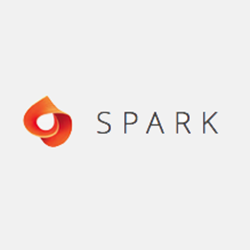
Latest News
May 4, 2015
It may sound obvious, but most modern consumers expect whatever gadget they’ve purchased to work perfectly the first time they turn it on. That expectation extends to additive manufacturing (AM). While hobbyists may be happy (even thrilled) to tweak and fuss with a design until it works perfectly, the average consumer doesn’t have the same amount of patience.
The basic fact that AM requires at least a tiny bit of technical knowledge to be consistently useful is part of the barrier to entry that is keeping 3D printers from becoming the next commonly owned home appliance. Microsoft and Autodesk have teamed up to help solve the problem, with the intention of simplifying and streamlining the AM experience for everyone, regardless of technical aptitude or previous experience with the technology.

The two companies hope to solve this problem by integrating the Spark platform in to Windows 10. Developers will be given free access to Spark APIs in order to cooperatively build 3D design software that is easy, simple and free to use, or to enhance existing programs. Adding Spark to Windows 10 will also make any supported 3D printer plug-and-play, just like your home printer or computer monitor.
“We’re approaching a tipping point with 3D printing, which means there is a huge market opportunity waiting for companies developing applications for Windows 10,” said Steve Guggenheimer, corporate VP of developer platform & evangelism and chief evangelist for Microsoft. “By providing the 3D printing building blocks found in the Spark platform and optimizing it for Windows 10, Autodesk has empowered our global developer community to confidently enter this new world of additive manufacturing.”
In addition to the intended improvements to reliability and ease of use, Autodesk is also looking to benefit from Microsoft’s HoloLens – Microsoft’s virtual reality (VR) system. Digital models created using Autodesk programs such as Maya or Fusion 360 could be pulled into VR for continued development by leveraging the versatility of the HoloLens system. The combination of the two technologies, CAD and VR, has the potential to completely change digital design.
“3D printing is incredibly promising, but also still too complex and unreliable. This relationship is a key step in making 3D printing easier and more accessible to businesses and individuals alike,” said Samir Hanna, VP & GM, consumer and 3D Printing, Autodesk. “Together with Microsoft and its global community of developers, we have an opportunity to tackle the complexities of 3D design and printing head-on to improve how things are made and even change the very nature of what we create.”
Below you’ll find a short video about the team up.
Source: Autodesk
Subscribe to our FREE magazine, FREE email newsletters or both!
Latest News
About the Author
John NewmanJohn Newman is a Digital Engineering contributor who focuses on 3D printing. Contact him via [email protected] and read his posts on Rapid Ready Technology.
Follow DE





